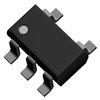-
A good thermal design should be used to ensure optimal heat dissipation. A thermal pad on the bottom of the package should be connected to a large copper area on the PCB to dissipate heat efficiently. A minimum of 2oz copper thickness is recommended.
-
To ensure reliable operation at high temperatures, it is essential to follow the recommended operating conditions, including voltage and current ratings. Additionally, a good thermal design and a reliable cooling system should be implemented to keep the junction temperature within the recommended range.
-
The device is sensitive to electrostatic discharge (ESD) and can be damaged by static electricity. Therefore, it is essential to handle the device with an anti-static wrist strap or mat, and to ensure that the PCB is properly grounded during assembly.
-
To troubleshoot issues with the device, it is essential to follow a systematic approach. First, verify that the device is properly powered and that the input voltage is within the recommended range. Then, check the output voltage and current to ensure they are within the specified limits. If the issue persists, check the PCB layout and thermal design to ensure they meet the recommended specifications.
-
To ensure accurate measurements, it is essential to follow the recommended test and measurement procedures outlined in the datasheet. This includes using a 4-wire Kelvin connection for current sensing and a high-impedance voltage measurement setup to minimize loading effects.
 STMPS2141STR datasheet
by STMicroelectronics
STMPS2141STR datasheet
by STMicroelectronics
Findchips
 STMPS2141STR datasheet
by STMicroelectronics
STMPS2141STR datasheet
by STMicroelectronics
 Findchips
Findchips